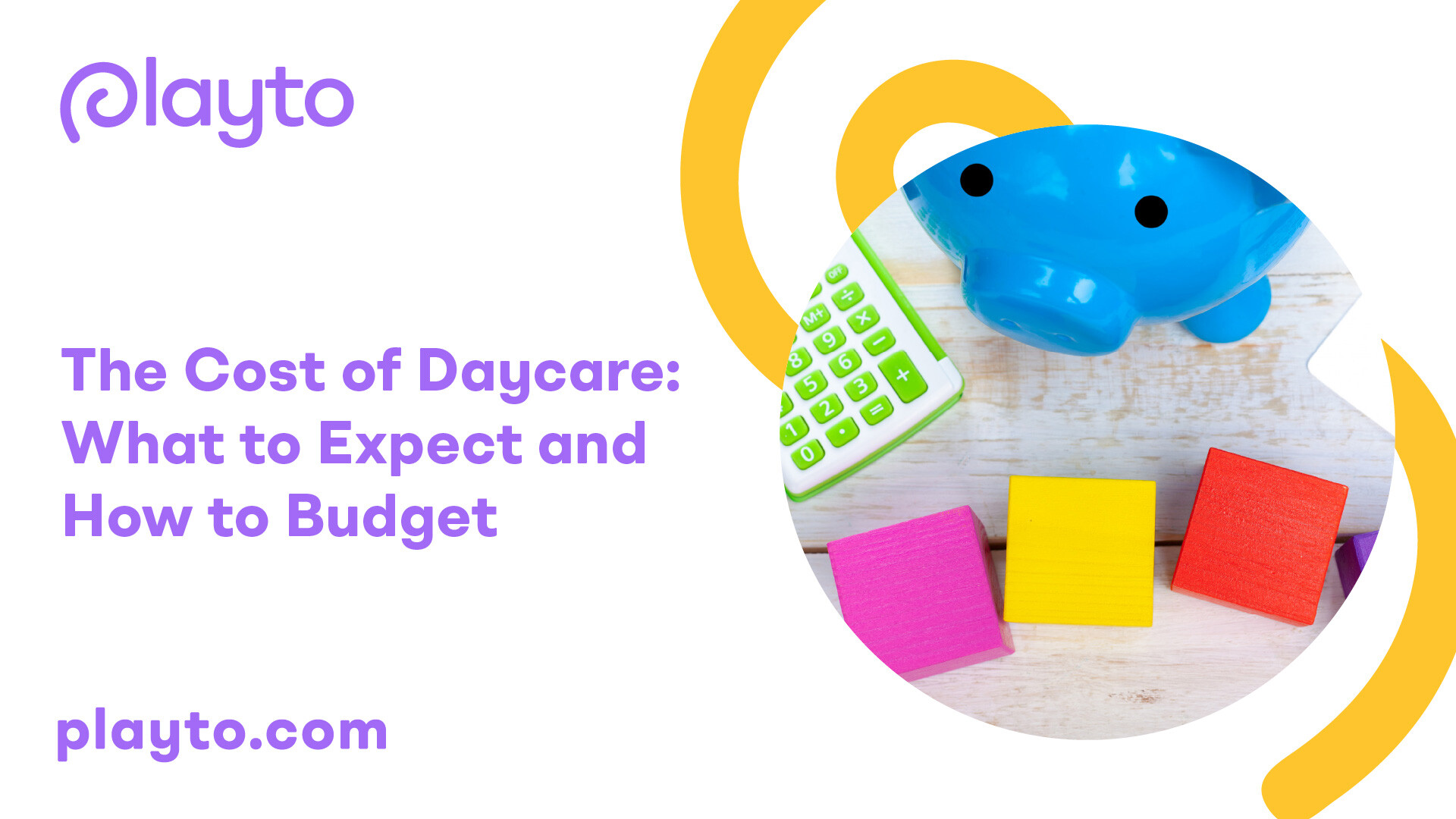Understanding Daycare Costs
When it comes to daycare, understanding the costs involved is crucial for parents to plan their budgets effectively. The average cost of daycare can vary depending on factors such as location, type of care, and age of the child. Let's explore the national average costs and the factors that affect pricing.

National Average Costs
While the average cost of daycare is not explicitly mentioned in the provided text, it's important to consider the statistics available. According to data from the U.S. Bureau of Labor Statistics, families are spending an average of 27% of their household income on childcare costs [1]. The average monthly cost for center-based toddler child care in the U.S. is $1,096, while center-based infant child care costs an average of $1,324 per month [2]. However, it's essential to note that these figures can vary significantly based on location and specific daycare providers.
To provide a broader perspective, childcare prices in the United States range from $4,810 for school-age home-based care in small counties to $15,417 for infant center-based care in very large counties. These prices represent between 8% and 19.3% of median family income per child. It's clear that daycare costs can place a significant financial burden on families.
Factors Affecting Pricing
Several factors contribute to the variations in daycare costs. Here are some key factors that can impact the pricing of daycare services:
- Geographical Location: Daycare costs can vary significantly based on the region or city. Areas with a higher cost of living generally tend to have higher daycare prices.
- Type of Care: Different types of care, such as home-based daycare, family care centers, or center-based care, can have varying cost structures. Home-based daycare options may be more affordable compared to center-based care.
- Age of the Child: The age of the child also plays a role in determining daycare costs. Infant care tends to be more expensive than care for older children due to the higher staff-to-child ratios and the specialized care required.
- Additional Services: Some daycare facilities may offer additional services such as potty training support, nap time policies, or specialized educational programs. These extra services can influence the overall cost of daycare.
- Quality and Accreditation: High-quality daycare centers that meet certain standards and accreditations may have higher pricing due to the additional resources and qualifications required to maintain quality care.
It's important for parents to thoroughly research and compare different daycare options in their area to find the best balance between quality and affordability. By considering these factors, parents can make informed decisions when budgeting for daycare expenses.
As the cost of daycare continues to be a significant expense for many families, it's essential to explore financial assistance programs, budgeting strategies, and other resources that can help alleviate the financial strain. In the following sections, we will delve into financial assistance programs available and provide tips for budgeting effectively for daycare costs.
Financial Assistance Programs
When it comes to managing the costs of daycare, there are several financial assistance programs available to parents. These programs aim to alleviate the financial burden of childcare expenses and make quality care more accessible. Two primary sources of financial support are government programs and employer programs.

Government Support
The cost of child care in the United States can be substantial, often surpassing housing, food, or even college tuition expenses [4]. To address this, the government offers various programs to help families with child care costs. These programs include:
- Subsidized Child Care: Some parents may be eligible for subsidized child care through state, school, employer, or military programs. Eligibility and availability can vary based on income and location.
- Tax Credits: Families may qualify for tax credits, such as the Child and Dependent Care Credit, which can help offset child care expenses on their annual tax returns.
- Native Hawaiian, Native Alaskan, and American Indian Programs: Specific programs are available to support child care for families with Native Hawaiian, Native Alaskan, and American Indian heritage.
To explore the specific government support programs for child care in your area, it is recommended to visit the official government websites or reach out to local child care resource and referral agencies. These resources can provide detailed information about available financial assistance programs and guide you through the application process.
Employer Programs
Some employers offer programs to assist their employees with child care costs. These programs can vary widely, ranging from reimbursement for child care expenses to on-site child care facilities. On-site child care can save time and money by eliminating the need for an additional commute to a separate child care center.
To understand the child care support programs offered by your employer, it is advisable to consult your human resources department or review the employee benefits handbook. They can provide information about available programs, eligibility requirements, and the application process.
Exploring both government support programs and employer programs can help parents alleviate the financial strain associated with child care costs. By taking advantage of these resources, families can better manage their budgets and ensure their children receive quality care while they work.
Budgeting for Daycare
When it comes to budgeting for daycare, it's important to consider the costs involved and explore strategies to save money. By being proactive and comparing different options, you can make informed decisions that align with your financial goals.

Cost-Saving Strategies
To help manage the cost of daycare, consider implementing the following cost-saving strategies:
- Flexible Work Schedules: Explore the possibility of adjusting your work schedule to minimize the number of daycare hours needed. This can help reduce costs by decreasing the amount of time your child spends in daycare.
- Shared Care: Coordinate with other families to share childcare responsibilities. This can involve alternating days or weeks between families, reducing the overall cost of daycare.
- In-Home Daycare: Consider in-home daycare providers as an alternative to center-based daycare. In-home daycare providers often have lower overhead costs, resulting in potentially lower rates.
- Childcare Assistance Programs: Investigate government support and employer programs that may offer financial assistance for childcare expenses. Some companies may reimburse child care expenses or offer on-site facilities, which can save time and money [1].
- Tax Benefits: Look into tax credits or deductions related to childcare expenses. These can help offset some of the costs associated with daycare.
Comparing Options
When selecting a daycare provider, it's essential to compare different options to find one that meets your needs and budget. Consider the following factors:
- Location: Choose a daycare center that is conveniently located to minimize transportation costs and time spent commuting.
- Quality of Care: Research the reputation and quality of care provided by different daycare centers. Look for signs of a high-quality daycare center, such as low staff turnover, positive parent reviews, and accreditation.
- Cost Structure: Compare the pricing structures of different daycare centers. Some centers may charge a flat weekly or monthly rate, while others may charge based on the number of hours or days your child attends.
- Additional Services: Inquire about any additional services or benefits offered by the daycare center. For example, some centers may provide potty training support.
- Availability of Subsidies: Investigate whether you qualify for childcare subsidies through your state, school, employer, or military service. Eligibility and availability can vary depending on your income and location.
By implementing cost-saving strategies and carefully comparing your options, you can effectively budget for daycare while ensuring your child receives quality care. Remember to consider the long-term impact of daycare costs on your family budget and make informed decisions that align with your financial circumstances and goals.
For more information on daycare-related topics, check out our articles on potty training support in daycare centers, communicating with your child's daycare provider, signs of a high-quality daycare center, and communicating with your child's daycare provider.
Impact of Daycare Costs
The cost of daycare can have a significant impact on family budgeting and economic considerations. Understanding these impacts is crucial for parents and caregivers as they navigate the financial aspects of childcare.
Family Budgeting
Childcare costs can consume a substantial portion of a family's income, affecting their overall budget. According to Money Management, families spend an average of 27% of their household income on childcare costs. The rates can vary depending on the type of care, with weekly rates for a single infant ranging from $229 at a family care center to $736 for a nanny. It is important for families to assess and plan their budget accordingly, considering the impact of childcare expenses.
To manage daycare costs within a family budget, it's essential to explore cost-saving strategies. This may include researching and comparing different daycare options, seeking financial assistance programs, and adjusting other areas of the budget to accommodate childcare expenses. By carefully analyzing the family's income and expenses, parents can make informed decisions to ensure their financial stability while providing quality care for their children.
Economic Considerations
The impact of daycare costs extends beyond individual families and can have broader economic implications. Higher childcare prices have been linked to a decrease in maternal employment, even in areas with higher women's wages [3]. The affordability of childcare services relative to family income can make it challenging for families to afford paid child care, particularly in areas with expensive childcare services. This can lead to decreased workforce participation and limit career opportunities for parents, particularly mothers.
Furthermore, the childcare sector in the United States operates on thin profit margins, resulting in low wages for childcare workers. This situation contributes to the existence of childcare deserts, where families have limited access to affordable and high-quality childcare options. Addressing these challenges requires substantial government investment in the childcare sector to ensure its adequate functioning and to support the economic well-being of families.
Quality, affordable, and accessible childcare is not only important for individual families but also for the overall economy. It supports higher employment rates, enables full-time work hours, reduces poverty, and diminishes socioeconomic disparities in employment and early care and education [3]. Recognizing the economic significance of childcare emphasizes the need for policies and initiatives that promote affordable and high-quality childcare options for families.
Understanding the impact of daycare costs on family budgets and the broader economy is essential for policymakers, parents, and caregivers. By addressing the affordability and accessibility of childcare, society can support families in managing their finances while ensuring the well-being and development of children.
Childcare Subsidies in Virginia
For families in Virginia, accessing affordable childcare is made possible through the Child Care Subsidy Program. This program aims to assist families in paying for childcare costs for children under the age of 13 who are not eligible for public school during the available hours or children with special needs under the age of 18 who reside with the applicant. If eligible and approved, the Subsidy Program can directly pay a portion of the childcare costs to the provider.
Eligibility Criteria
To determine eligibility for the Child Care Subsidy Program in Virginia, certain criteria must be met. Families with children aged 0-5, who have not yet started kindergarten, may be eligible for financial assistance. Income guidelines have been increased to accommodate more families in need of support.
To find out if you qualify for childcare subsidies, it is recommended to contact Child Care Aware of Virginia at 866-543-7852. They offer personal assistance in finding childcare and can provide guidance on eligibility requirements and the application process.
Application Process
To apply for childcare subsidies in Virginia, families must complete an application through the Child Care Subsidy Program. The application process involves providing information about the family's income, household size, and other relevant details. The completed application must be submitted to the appropriate agency responsible for administering the program in your area.
To assist families in finding suitable childcare options, the Virginia Department of Education provides the Search for Child Care web tool. This tool offers facility information and inspection reports for licensed and religiously exempt child care centers, licensed and voluntarily registered family day homes, and certified preschools. It is a valuable resource for families to make informed decisions about their childcare options.
When applying for childcare subsidies or exploring the available options, it's important to consider the needs of your family and the quality of childcare programs. High-quality childcare has been linked to greater achievement and success in school and life. Take the time to research and evaluate different providers to find the best fit for your child's needs.
Ontario's Child Care System
In Ontario, the government has implemented fee reduction policies to improve the affordability of child care. These policies aim to make child care more accessible and affordable for families. As of January 2023, most families with children under six enrolled in licensed child care programs saw a fee reduction of up to 50 percent, retroactive to April 1, 2022.
The current policy direction in Ontario is to achieve an average of $10-a-day child care by 2026. However, reaching this goal depends on various factors, including the availability of qualified early childhood educators and the creation of new child care spaces.
Fee Reduction Policies
The fee reduction policies implemented in Ontario aim to reduce the financial burden on families by lowering the cost of child care. These policies ensure that most families with children under six enrolled in licensed child care programs can benefit from reduced fees. The specific amount of fee reduction depends on various factors, including the age of the child and the type of child care program.
Subsidy System Requirements
To further support families with the cost of child care, the provincial government in Ontario, in collaboration with the federal government, offers a daycare subsidy system. This system helps eligible families reduce their out-of-pocket expenses and makes quality child care more accessible.
Eligibility for daycare subsidies in Ontario is based on a combination of factors, primarily family income, the age of the child, and whether the parents are working or attending school full-time. Families must meet specific criteria to qualify for subsidies. The application process typically involves submitting proof of income, residency, and child care arrangements.
Licensed child care centers in Ontario are regulated by the Ministry of Education and must adhere to specific standards for health, safety, and program quality. These centers offer structured programs for different age groups and are led by qualified early childhood educators. Families can choose from a variety of licensed child care options, including center-based care, home-based care, and before- and after-school programs.
Navigating the child care system in Ontario can be complex, but understanding the fee reduction policies and subsidy system requirements can help families access the child care support they need. It's important to stay informed about the latest developments and eligibility criteria to make the most of the available resources.
For more information on choosing a high-quality daycare center in Ontario, you can refer to our article on signs of a high-quality daycare center.
